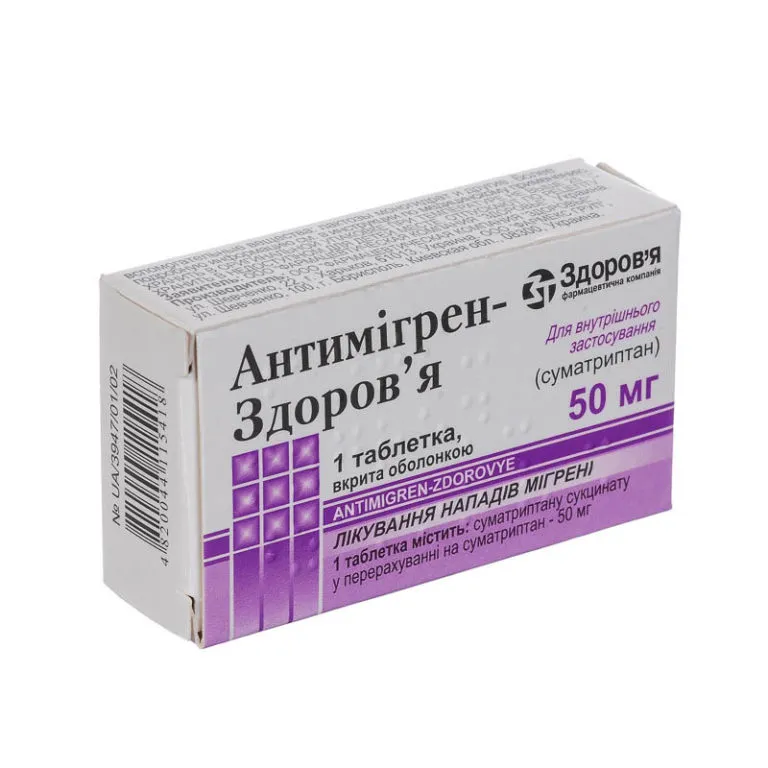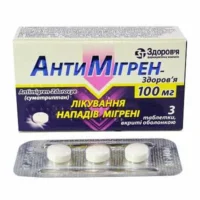Description
Antimigren (Sumatriptan) Coated Tablets 50 mg. №1
Composition
Active ingredient: Sumatriptan succinate 50 mg.
Other ingredients: Microcrystalline cellulose, lactose monohydrate, croscarmellose sodium, magnesium stearate, hypromellose, titanium dioxide, triacetin.
Mechanism of Action
Sumatriptan, a selective serotonin receptor agonist, acts by constricting blood vessels in the brain, thereby relieving migraine symptoms.
Pharmacological Properties
Sumatriptan is effective in treating acute migraine attacks with or without aura. It helps reduce symptoms such as nausea, sensitivity to light, and sensitivity to sound.
Indications for Use
Antimigren (Sumatriptan) Coated Tablets are indicated for the acute treatment of migraine attacks with or without aura.
Contraindications
Do not use Antimigren (Sumatriptan) Coated Tablets if:
- You have uncontrolled hypertension.
- You have a history of heart disease.
- You are taking MAO inhibitors.
Side Effects
Common side effects of Antimigren (Sumatriptan) Coated Tablets may include dizziness, drowsiness, or chest tightness. If you experience severe side effects or signs of an allergic reaction, seek immediate medical attention.
Usage Instructions
For Adults: Take 1 tablet by mouth with water as soon as migraine symptoms appear. Do not exceed 2 tablets in a 24-hour period.
Take the tablet whole with water. Do not crush or chew. If symptoms persist or worsen after taking the tablet, consult a healthcare provider.
Benefits Compared to Analogues
Antimigren (Sumatriptan) Coated Tablets offer fast and effective relief for acute migraine attacks, providing targeted relief with minimal side effects compared to other migraine medications.
Suitable Patient Groups
Antimigren (Sumatriptan) Coated Tablets are suitable for adults experiencing migraine attacks. Consult a healthcare provider for appropriate dosing in special populations such as children or the elderly.
Storage Conditions and Shelf Life
Store Antimigren (Sumatriptan) Coated Tablets in a cool, dry place away from direct sunlight. Keep out of reach of children. Check the expiration date on the packaging and do not use after the specified date.
Packaging Description
Antimigren (Sumatriptan) Coated Tablets are packaged in blister packs to ensure product integrity and protection from external factors. Each blister contains a single tablet for convenient dosing.
Scientific Evidence
Sumatriptan, the active ingredient in Antimigren tablets, has demonstrated efficacy in clinical trials for treating acute migraines and associated symptoms. Studies have shown its ability to provide relief and improve quality of life for migraine sufferers.
Additional Information
Antimigren (Sumatriptan) Coated Tablets are not intended for migraine prevention and should only be used for treating active migraine episodes. Regular consultation with a healthcare provider is recommended for managing migraine frequency and exploring preventive treatment options.




